 Mysteries
Mysteries  Mysteries
Mysteries  History
History 10 Surprising Stories About the Texas Rangers
 Humans
Humans 10 Philosophers Who Were Driven Mad by Their Own Theories
 Miscellaneous
Miscellaneous 10 Video-Game-Worthy Weapons and Armors from History
 Weird Stuff
Weird Stuff 10 Psychics Who Accurately Predicted Wartime Events
 The Arts
The Arts 10 Pieces of Art Inspired by a Broken Heart
 Health
Health 10 Science Fiction-Sounding New Medical Treatments
 History
History 10 Surprising Facts About the Father of Submarine Warfare
 Space
Space Ten Astonishing New Insights into Alien Worlds
 Weird Stuff
Weird Stuff 10 Bizarre Summer Solstice Rituals Still Practiced Today
 Mysteries
Mysteries Top 10 Haunting Facts About the Ghost Ship MV Alta
 History
History 10 Surprising Stories About the Texas Rangers
 Humans
Humans 10 Philosophers Who Were Driven Mad by Their Own Theories
Who's Behind Listverse?

Jamie Frater
Head Editor
Jamie founded Listverse due to an insatiable desire to share fascinating, obscure, and bizarre facts. He has been a guest speaker on numerous national radio and television stations and is a five time published author.
More About Us Miscellaneous
Miscellaneous 10 Video-Game-Worthy Weapons and Armors from History
 Weird Stuff
Weird Stuff 10 Psychics Who Accurately Predicted Wartime Events
 The Arts
The Arts 10 Pieces of Art Inspired by a Broken Heart
 Health
Health 10 Science Fiction-Sounding New Medical Treatments
 History
History 10 Surprising Facts About the Father of Submarine Warfare
 Space
Space Ten Astonishing New Insights into Alien Worlds
 Weird Stuff
Weird Stuff 10 Bizarre Summer Solstice Rituals Still Practiced Today
Top 10 Captivating Tales Surrounding Famous Landmarks
Just kidding. Obviously, there is a lot more to countries around the world other than their landmarks, but it cannot be disputed that they are a big part of the reason people choose to travel to certain locations. Some of these landmarks have amazing backstories, while others have fantastic legends surrounding them, drawing in visitors who want to try and uncover its secrets.
Top 10 Iconic Places Pictured From Behind
10 Hidden messages

Towering above Rio de Janeiro, the Christ the Redeemer Art Deco statue is one of the largest statues of Jesus in the world and one of its New Seven Wonders. The statue’s open arms are a symbol of peace and it is the most famous landmark in Brazil. The right arm points to south Rio and the left to north Rio.
In the 1850s a local priest dreamt up the idea of creating a Christian monument on Mount Corcovado. A request to Princess Isabel for funding fell through after Brazil separated church from state in 1889. The priest’s dream was eventually realized after the First World War when, after a handful of designers crafted the statue, it was opened to the public on 12 October 1931.
Workers who made and glued the 6 million soapstone tiles that cover the statue, are said to have written messages on the back in the form of wishes or simply their lover’s name. One of the workers, Lygia Maria Avila da Veiga, was immensely proud to have her personalized tiles displayed on the statue, saying: “I wrote many wishes on the soapstones. They are up there, up there on top.”[1]
9 70 years and counting
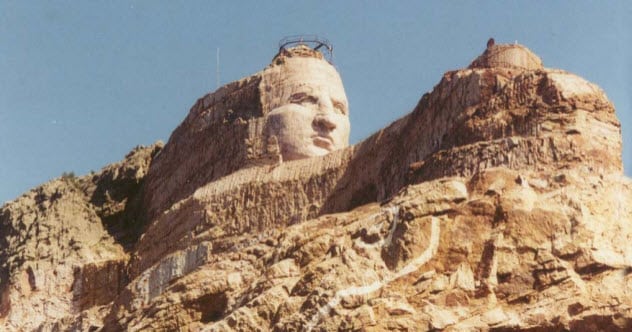
In South Dakota lies what is supposed to be the world’s biggest monument. ‘Supposed to be’, because after 70 years it is still not finished. In 1948, Polish American sculptor Korczak Ziolkowski started work on Crazy Horse, a depiction of a Native American warrior on horseback, believing it would take 30 years to complete. He started the project with less than $200 in his pocket, no electricity, water, or functional roads to speak of. He climbed a 741-step wooden staircase to scale Thunderhead Mountain and start work on the monument. Having no money to pay workers, Ziolkowski worked alone for many years. He died in 1982, with his last wish being that his family commit to completing the monument.
Crazy Horse is a famous figure in Native American culture and the sculpture is meant to be a monument in his honor. The granite mountain into which it is being carved sports a symbolic depiction of Crazy Horse, since no photographs of the warrior exist. When the landmark is finally completed, Crazy Horse will point southeast towards a plot where many Native Americans have been buried. The plan for the memorial came in ‘retaliation’ of the tribute to white American leaders on the nearby Mount Rushmore. When completed, the Crazy Horse memorial will make all four faces on Mount Rushmore seem tiny. In the meantime, visitors to South Dakota can explore the top of the unfinished memorial and explore the area that hopefully one day will sport Crazy Horse’s outstretched arm.[2]
8 A tree of contention
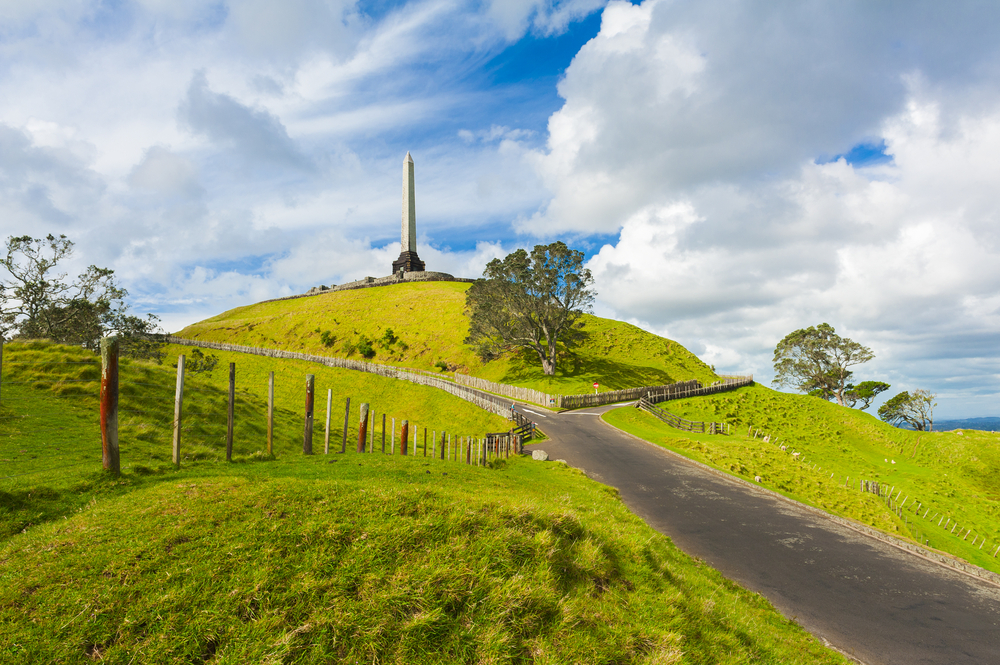
Maungakiekie is Maori for “mountain of the kiekie vine.” Also known as One Tree Hill, this volcanic peak in Auckland, New Zealand, holds a dear spot in the history of the country. After a battle in 1740, a fortified Maori village was abandoned when their chief was killed in action. The village sat on top of the volcano and only one native tree remained after it was abandoned, hence the name One Tree Hill.
Unfortunately, a settler cut down the lone tree in 1852, after which businessman John Logan Campbell decided to plant a grove of pine trees in its place. Of this grove only one tree survived. Campbell’s gravesite is located at the peak alongside a bronze statue of Chief Tamaki as well as an obelisk dedicated to the Maori people.
In 1994, the surviving pine tree was partially cut up with a chainsaw by Maori activists and then destroyed by other activists in 2000 in retaliation of the New Zealand government’s treatment of the Maori.
In 2016 nine new trees were planted to replace the pine and these are now surrounded by a fence. Once they are strong enough, arborists will pick the hardiest of the bunch to remain, once again returning the true meaning of the phrase One Tree Hill.[3]
7 Misunderstanding
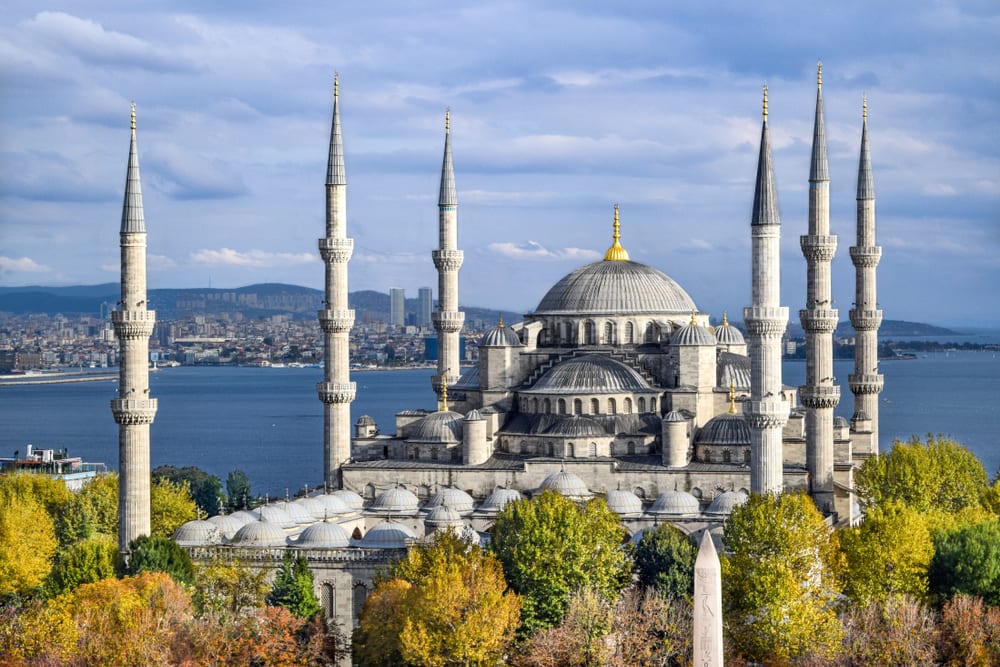
The Sultan Ahmed Mosque is a major tourist attraction in Istanbul, Turkey. Nicknamed The Blue Mosque because of its interior colors, the place of worship was constructed between 1609 and 1616 as a proclamation of Ottoman power and is still in use today.[4]
Sultan Ahmed I allegedly insisted that the mosque have six minarets, causing controversy in the Muslim community because only the great mosque in Mecca at the time had six minarets. The sultan wasn’t deterred and arranged for a 7th minaret to be added to the Mecca mosque so that he could have the six he desired for his own. Another version of this tale says that the sultan’s architect misunderstood his requirements regarding the minarets. The sultan wanted gold minarets, (altin minaret in Turkish), and the architect heard six minarets, alti minaret.
6 The Sea People
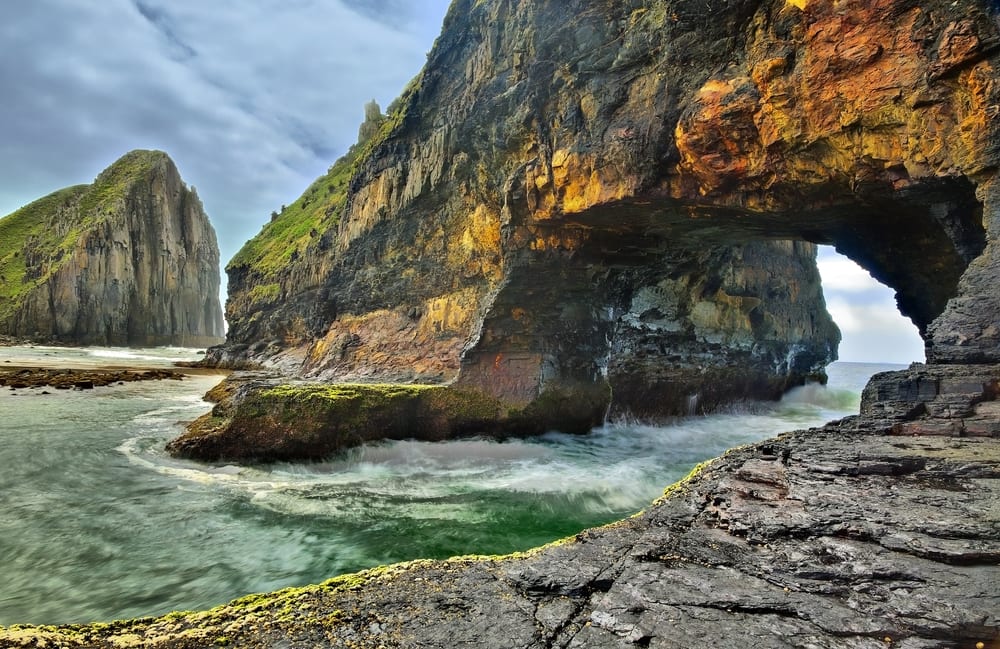
South Africa is perhaps most known for its varied wildlife and Table Mountain, but it has some spectacular beaches too. Along the Wild Coast lies Hole-in-the-Wall, one of SA’s most memorable landmarks. Hole-in-the-Wall is a massive, detached cliff with an opening through its centre that has been carved out by waves over time.
The cliff was named by Captain Vidal who headed the Barracouta vessel in 1823 when sent on an expedition to survey the coastline on which it stands. The locals, the Bomvana people, called the cliff ‘iziKhaleni’ which means ‘Place of the Sound’ or ‘Place of Thunder.’
Legend has it that the Mpako River once was a lagoon blocked off by the cliff. A young, beautiful girl sat on the cliff’s edge each day and stared out to sea, drawn to the overwhelming power of the waves. One day, one of the sea people came out to meet her. He had long hair and hands and feet like flippers, and when he approached the girl, he immediately asked her to marry him. However, when her father found out, he was enraged and warned her never to see the man from the sea again.
The girl disobeyed and ran to the man she had fallen in love with, telling him about her father’s warning. The man told her to wait until high tide. When she returned to the cliff during high tide, several sea people were standing on top of it, carrying a giant fish. They used the fish to carve a hole in the cliff, creating a passage from the lagoon to the sea. As the water gushed through the hole, pushed forward by the high tide, hundreds of sea people flowed through on the waves, led by the girl’s sea lover. She went to his side, and the entire group disappeared back through the hole in the rock and was never seen or heard from again.[5]
To this day, the legend continues, and it is said that when the tide is high, the sea people can be heard singing above the sound of the waves surrounding Hole-in-the-Wall.
Top 10 Places Famous For Bizarre Reasons
5 Angel on top of the world

As the towers fell on 11 September 2001, some saw the devil’s face in the plumes of smoke. Most 9/11 devil face images circulating to this day were clearly photoshopped, but the most famous picture, dubbed ‘Satan in the smoke’, remains a point of contention with some firmly believing that the devil (or even an image of Osama bin Laden) appeared as the South Tower came down. Some are even convinced that Nostradamus predicted the evil that would befall Lower Manhattan that fateful day.
As part of the rebuilding of the World Trade Center Complex, the Freedom Tower, or One World Trade Center was constructed. The building opened on 3 November 2014 and its observatory opened on 29 May 2015. On 11 September 2016, the Tribute in Light Memorial lights shone brightly in the place where the two towers once stood. Photographer, Rich McCormack, took several photos of the lights and soon became aware of something unusual in the photographs once he went through them. High up in the sky, at the end of the light beam, was a figure that resembled an angel.
McCormack insisted that he hadn’t tampered with the photographs in any way and that he believed it may have been an angel or the Lord himself looking down on Manhattan.[6] While some immediately called ‘pareidolia’ or ‘optical illusion’, others were encouraged by the image and believed it to be religious in nature.
4 The end of the world as we know it
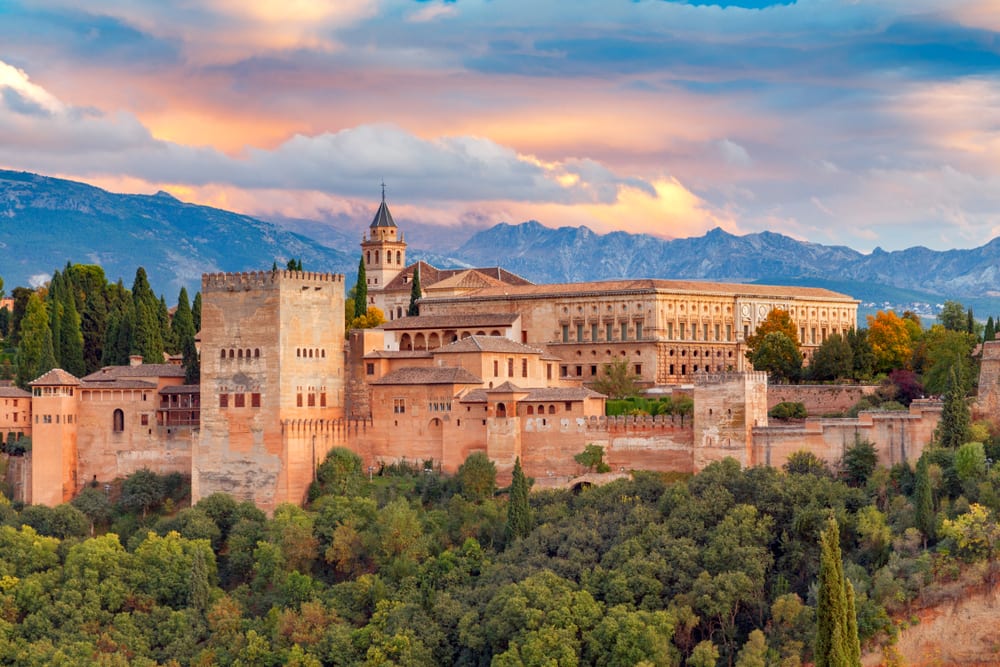
Constructed as a small fortress in 889 AD, the Alhambra complex in Granada, Spain, was renovated and rebuilt in the middle of the 13th century to include a royal palace. Alhambra is the Spanish adaption of the Arabic ‘qa’lat al-Hamra which means ‘red castle.’ The complex also includes the Court of the Myrtles, Hall of the Ambassadors, Court of the Lions, and the Hall of the Abencerrajes. The royal palace is the only surviving palatine city of the Islamic Golden Age. Today it is visited by thousands of tourists every year and is one of the most famous historical sites in the whole of Spain.[7]
As is the case with most historical sites, the Alhambra is surrounded with long-standing legends. One of the most popular being the one that alludes to the end of the world. On the Gate of Justice, one of the main entrances to the fortress, a hand has been carved into the arch stone and a key in the centre of the inner archway. Both are prominent Islamic symbols with the hand used to ward off the evil eye. Legend says that when the hand and the key join to become one, the world as we know it and the fortress itself will be destroyed simultaneously. It is also believed that fearful Catholics have put up a statue of the Virgin Mary over the door to the fortress, to prevent this calamity from happening.
3 A place of myth and legend
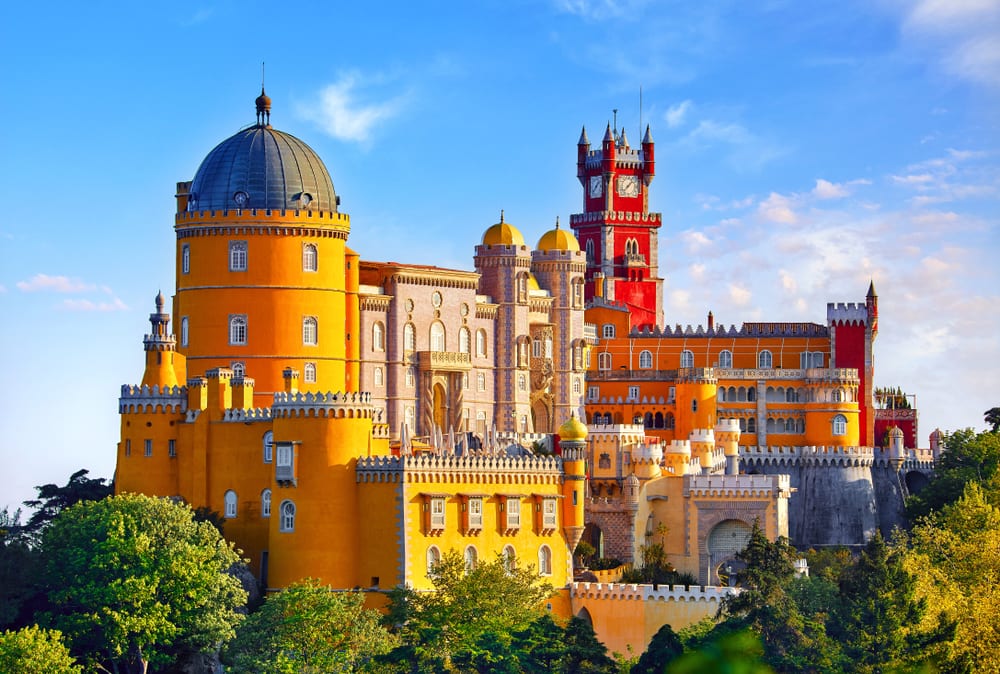
The Pena Palace is a castle located in the Sintra Mountains, Portugal. The castle was constructed on the site of a medieval chapel which was dedicated to “Our Lady of Pena.” After a reported sighting of the Virgin Mary at the chapel, many believers started pilgrimaging there. In 1493, King John II of Portugal and Queen Leonor ascended the Sintra mountains to pay homage to their patron and when the king saw how beautiful the location was, he ordered that a monastery be built there and donated to the Order of Saint Jerome. After a devasting earthquake in 1755, the monastery was shaken but the chapel was unscathed.
The town of Sintra itself is a major tourist destination because of the above-mentioned Pena Palace and a host of other castles and palaces. Sintra has been declared a UNESCO World Heritage Site and is a picturesque landmark of Portugal. The town was named, according to legend, after its people built a temple that was rejected by Rome after its completion. The people then dedicated and consecrated it to Cinthia (the moon) and Sintra was derived from this.
Sintra is also the center of the Yellow Rock legend. In a remote area of Sintra, a large stone protrudes from the ground. It is believed that whoever can topple the stone will be allowed to take the treasure buried beneath it. The catch? The rock must be toppled by throwing eggs at it. A long time ago, an old woman approached the rock with a horde of eggs. She threw the whole lot of them at the rock but was unable to move it. To this day, the yellow moss that grows on the strange rock is said to be the egg yolks splashed over it by the unlucky old woman.[8]
2 Ceremony of strength
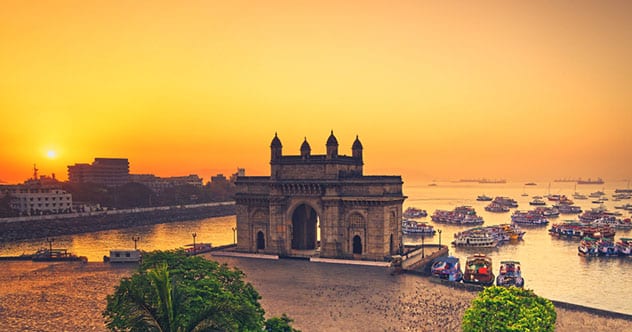
To commemorate the landing of King-Emperor George V and Queen-Empress Mary at Apollo Bunder, Bombay (Mumbai today) in 1911, a massive arch-monument was erected and named the Gateway of India. George V was the first British monarch to visit India. The gateway faces the Arabian sea on one side and the Taj Mahal Palace hotel on the other and has over time become of the most photographed places in the world. It was also the place from which the last British troops departed India in 1948, after the country gained its independence the year before. Furthermore, the gateway was the place Mahatma Ghandi landed when he returned to India after his 22-year stay in South Africa.[9]
Eleven years after the devasting terror attacks on Mumbai in 2008, the Gateway of India became host to the 26/11 Stories of Strength event. The monument was lit up and sported the fateful date at the top, while the Indian Navy band performed in front of it. Several government officials and celebrities, including veteran actor Amitabh Bachhan attended the emotional event and Bachhan closed the ceremony by reciting a powerful poem. The event also featured accounts of survivors and coincided with the 150th birthday year of Mahatma Ghandhi.
1 Last glimpse of freedom
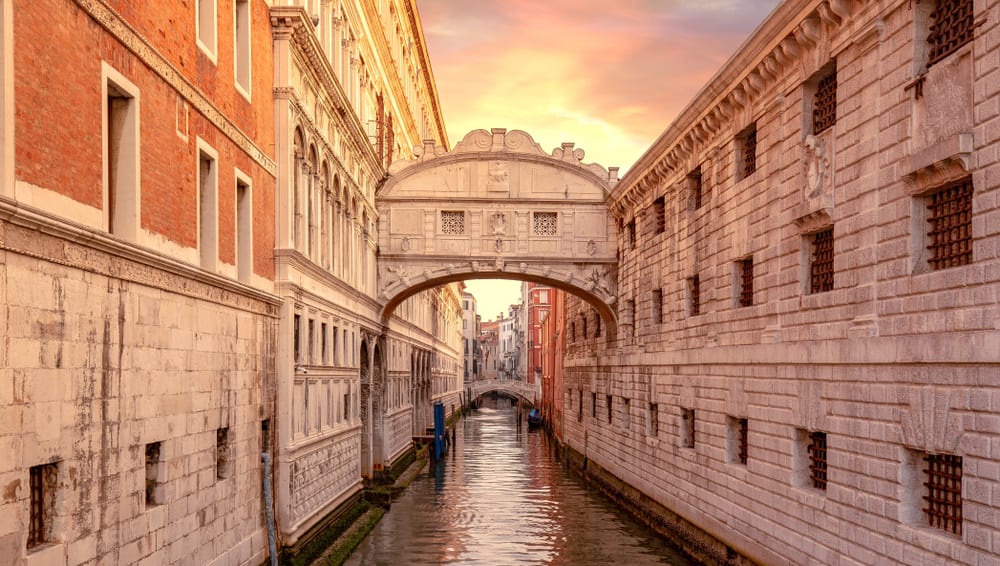
Venice, Italy is a highly popular tourist attraction, in no small part due to the gondola rides visitors can take through the canals. Venice is also home to what was an infamous old prison in the Doges Palace. At one point a bridge was constructed to connect this old prison to a new prison across the river that divided them. This bridge, over time, became known as the Bridge of Sighs.
Theory has it that it is so called because those who were marched over it, were going to be jailed for a long time and they sighed as they glimpsed the river and what would be their last beautiful sight while still free. Poet, Lord Byron, mused in one of his poems that the bridge was the last point at which condemned criminals could see Venice before they were led to their executioner. As one sails down the river and approaches the bridge today, the prison cells can still be seen on the right.
Another, more upbeat legend has it that if a couple sails in a gondola and kiss as they pass under the bridge, they will never be separated from one another.[10]
Top 10 Creepiest Places On Earth (That You Probably Don’t Know)








